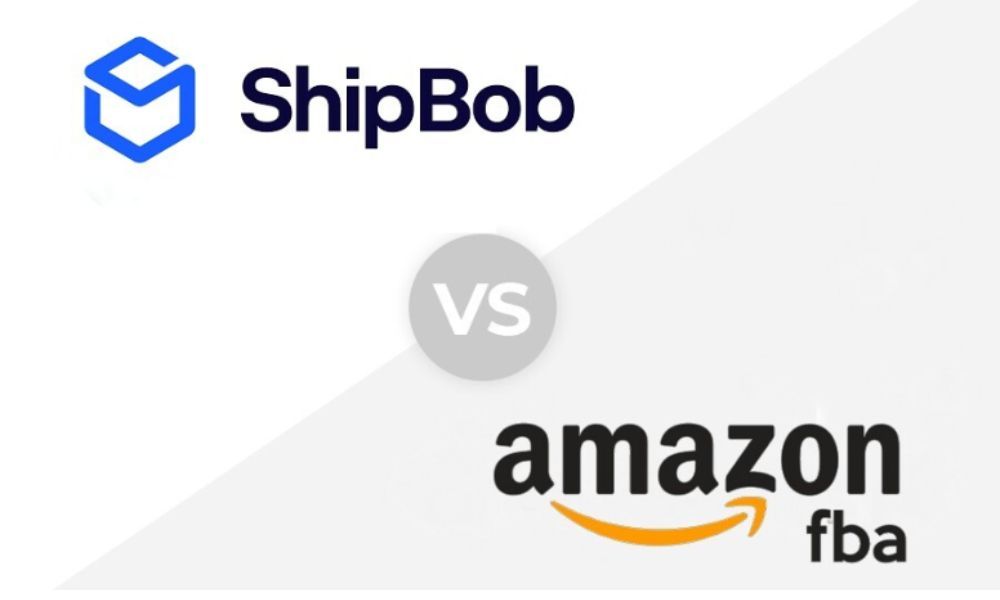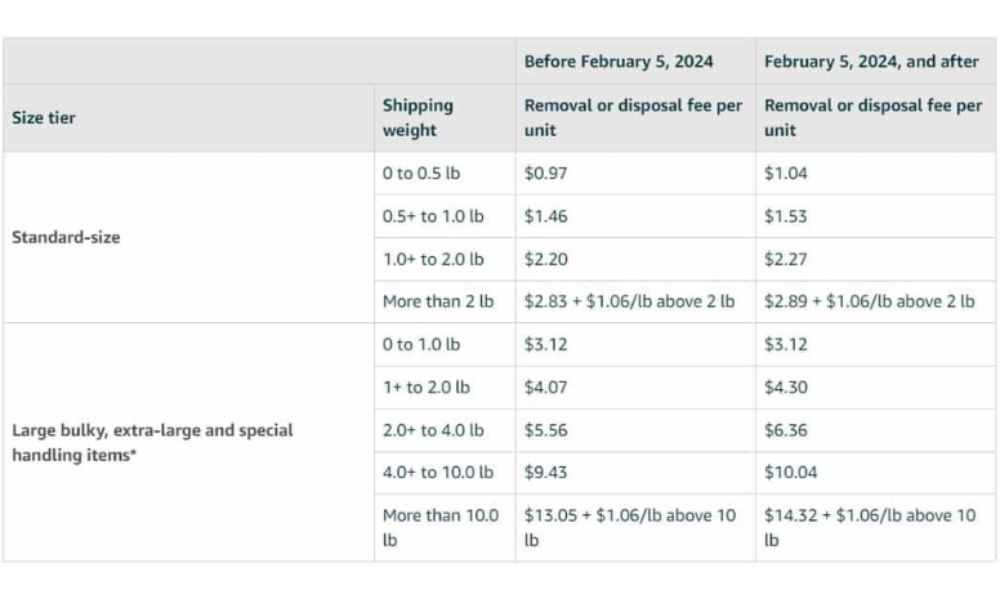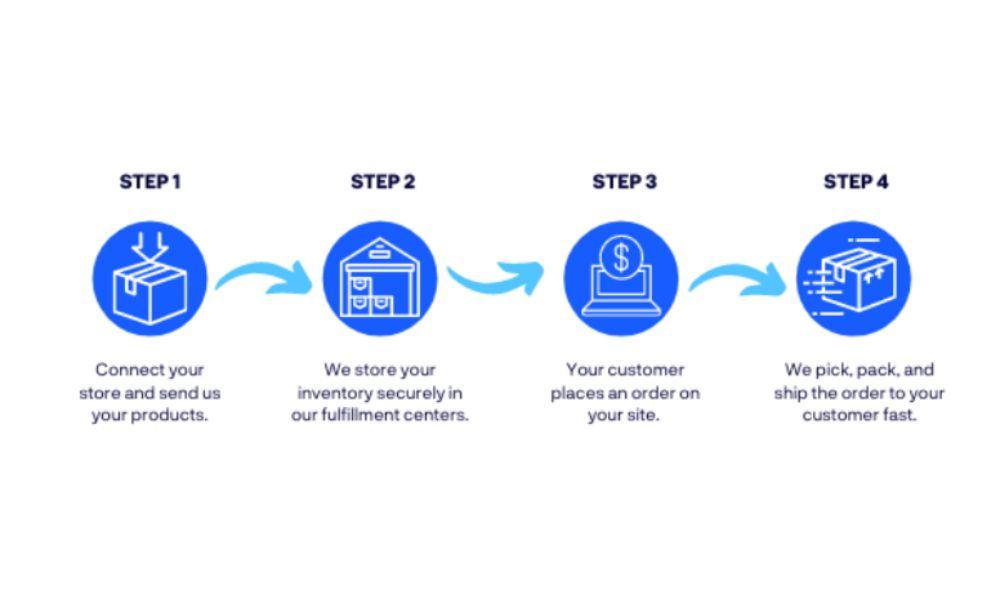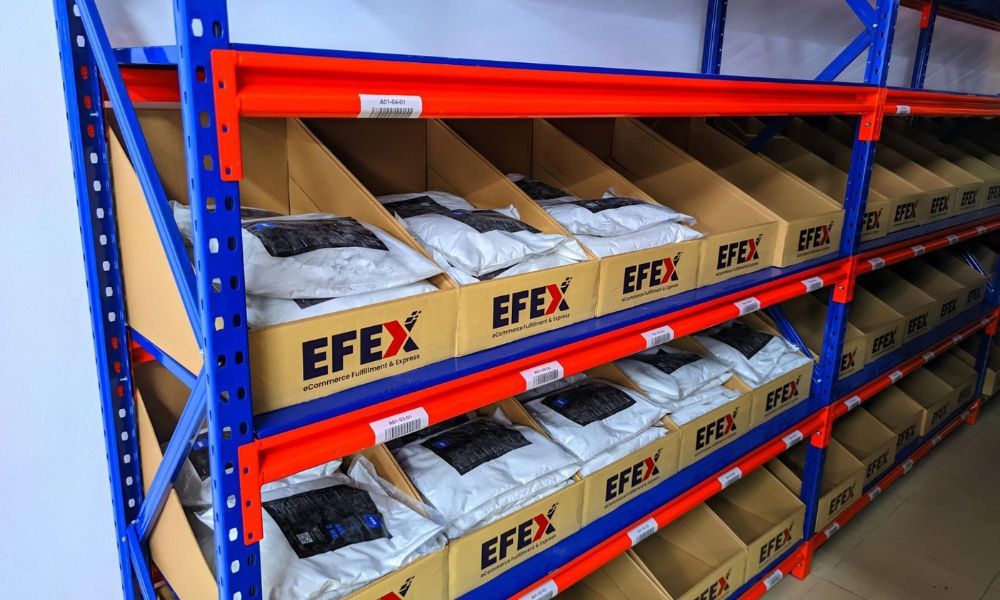
More Helpful Content
Choosing the right fulfillment service can make or break your e-commerce success. With so many options available, two names often stand out: ShipBob and Amazon FBA. Both are leaders in the industry, but each offers distinct advantages and disadvantages depending on your business needs. So, how do you decide between them?
In this guide, we’ll dive into the key differences, pros and cons, and pricing structures of ShipBob vs Amazon FBA, helping you make an informed decision. Here's what we'll cover:
By the end of this article, you’ll have a clear understanding of which fulfillment service aligns with your business goals and growth strategy. Let’s get started!
When choosing between ShipBob vs Amazon FBA, it’s essential to understand their core differences. Both are fulfillment giants, but they cater to different business needs. While ShipBob offers a personalized approach for small to mid-sized brands, Amazon FBA integrates sellers into the Amazon ecosystem, offering global scalability with Prime benefits. Let’s break down the comparison:
| Feature | ShipBob | Amazon FBA |
| Order Fulfillment Rating | 4.47/5 | 3.54/5 |
| Monthly Minimum Requirement | $275 | None |
| US Warehouse Locations | 39 | 110 |
| International Locations | 9 | 75 |
| Shipping Partners | FedEx, UPS, USPS, DHL, Amazon Logistics, OnTrac, more | Amazon Logistics, UPS, DHL |
| B2B Fulfillment | ✓ | ✓ |
| Error Rate | 0.01% | Undisclosed |
| Package Tracking | ✕ | ✓ |
| Client Support | Very good | Poor |
| Customization & Branding | Minimal customization, limited branding options | Amazon-branded packaging only |
| Scalability | Ideal for scaling small to mid-sized businesses | Global scalability within Amazon’s ecosystem |
When comparing ShipBob vs Amazon FBA, their fulfillment process and features are crucial in understanding which service best aligns with your eCommerce needs. Both offer extensive logistics capabilities, but their focus differs—ShipBob prioritizes flexibility for multi-channel sellers, while Amazon FBA leverages its marketplace dominance. Let’s explore their fulfillment processes side by side.

| Feature | ShipBob | Amazon FBA |
| Order Turnaround Time | Very good – efficient for businesses needing fast but flexible shipping. | Excellent – renowned for rapid shipping, especially for Prime orders. |
| Volume Discounts | ✓ – Offers cost reductions for high-order volumes, helping businesses manage large sales. | ✓ – Similar discounts for bulk shipping, great for scaling within Amazon’s ecosystem. |
| Prebuilt Integrations | 114 integrations, including Shopify, WooCommerce, BigCommerce, and TikTok. | 32 integrations, focusing on Adobe Commerce, Shopify, and WooCommerce. |
| Cross-border Shipping | ✓ – Supports international shipping with Delivery Duty Paid (DDP) options for smooth customs clearance. | ✓ – Handles cross-border shipping, though DDP is not supported, making customs more complex. |
| Amazon Prime Eligibility | ✕ – Not eligible for Prime but great for non-Amazon multi-channel sellers. | ✓ – Offers Prime and Seller-Fulfilled Prime (SFP), boosting customer trust and sales speed. |
| Boosts Amazon Visibility | ✕ – No direct impact on Amazon search rankings. | ✓ – Being part of FBA improves Amazon search visibility and product rankings. |
| FBA Prep Service | ✓ – Provides preparation services for sellers also using Amazon FBA. | ✓ – Fully integrated, eliminating the need for external prep services. |
| Freight Management | ✓ – Comprehensive freight handling, offering flexibility for various shipping needs. | ✕ – Freight services are not directly handled but available through third-party integrations. |
| Returns Management | Integrated with Happy Returns, Loop Returns, and Returnly, making returns easy. | Uses ReturnGO, simplifying returns but only within the Amazon ecosystem. |
| Reporting & Analytics | Excellent – Detailed insights across various platforms. | Very good – Robust reporting but primarily focused on Amazon-centric data. |
| Post-Sale Servicing | ✕ – Limited post-sale support beyond basic order processing. | ✓ – Amazon manages customer service, including returns and refunds, enhancing customer experience. |
ShipBob’s Flexibility for Multi-Channel Sellers
If your business operates across platforms like Shopify, TikTok, and BigCommerce, ShipBob offers seamless integration and flexibility. Their freight management and DDP shipping options simplify international logistics, making them ideal for companies expanding globally.
However, without Prime eligibility, ShipBob is better suited for sellers who aren’t focused solely on Amazon.
Amazon FBA’s Market Dominance
Amazon FBA stands out for its Prime eligibility and search visibility boosts, making it ideal for sellers embedded in the Amazon marketplace. Additionally, FBA's excellent turnaround time enhances customer satisfaction, especially for Prime members.
The downside? Limited flexibility outside of Amazon. If you're planning to grow across non-Amazon channels, FBA may not provide the customization or integration needed.
The right fulfillment partner does more than ship products—it shapes how efficiently your business operates. Comparing ShipBob vs Amazon FBA reveals key differences in user experience and platform integration, from packaging flexibility to customer support speed.
Whether you're looking for tailored services or a streamlined Amazon-centric process, understanding these differences can make or break your fulfillment strategy.
User Experience and Platform Integration Comparison:
| Functionality Aspect | ShipBob | Amazon FBA |
| Packaging Requirements | ✕ – No rigid packaging standards, offering flexibility for branding. | ✓ – Requires strict packaging standards, aligned with Amazon’s guidelines. |
| Liability Insurance on Inventory | ✕ – Inventory insurance is not offered. | ✕ – No inventory insurance provided. |
| Flexible Special Services | ✓ – Offers customizable services to meet unique business needs. | ✕ – Limited to standard Amazon procedures. |
| Software Usability | Excellent – Intuitive, easy to navigate with robust functionality. | Good – Functional but optimized mainly for Amazon-centric sellers. |
| Billing Transparency | Line-item visibility, helping businesses track exact costs. | Line-item visibility, but hidden fees are commonly reported by users. |
| Hidden Fees | ✓ – Users report some hidden fees, though billing is mostly transparent. | ✓ – Hidden fees often emerge, especially for storage and returns. |
| Service Termination | Easy – Seamless process with minimal complications. | Easy – Straightforward termination process, though some delays are reported. |
| Communication Channels | Phone, live chat, and email support available Monday to Friday, 9 a.m.–5 p.m. | Online ticket form with slower response times. |
| Average Response Time | 1.2 hours – Fast and efficient support. | 24-48 hours – Slower responses reported by users and third-party reviewers. |
| Dedicated Account Manager | ✕ – No dedicated account manager, but customer service is responsive. | ✕ – No personal account management, limited to general support channels. |
When it comes to fulfillment, pricing can significantly impact your bottom line. In this section, we’ll break down the cost structures of ShipBob vs Amazon FBA, highlighting how each service manages onboarding, storage, and fulfillment fees. Whether you're looking for flexibility or cost-efficiency, knowing these differences is crucial for your eCommerce growth strategy.
Comparison of Cost Structures and Pricing Models:
| Cost Element | ShipBob | Amazon FBA |
| Onboarding and Implementation | $975 for full implementation package or $0 with the Growth Plan for self-onboarding. | $0, but monthly Amazon seller fees apply. |
| Inbound Shipping | Discounted rates available. | Discounted rates available. |
| Receiving | $35 for the first two hours, $45 per hour thereafter. | $0 if all guidelines are met. |
| Storage | $40 per pallet, $10 per shelf, or $5 per bin per month. | $0.56–$0.87 per cubic foot from January to September; $1.40–$2.40 from October to December. |
| Fulfillment Fee | Per-package fee, covering pick and pack (first four items free), packaging, and shipping. | $3.43–$12.61 per unit for standard products; $18.13+ for oversized items. Each unit in an order is charged separately. |
| Pick and Pack | Free for up to four items, then $0.26 per additional item. | Included in the fulfillment fee, but each unit is billed separately, increasing costs for multi-item orders. |
| Packaging Materials | Free. | Free. |
| Shipping Fees | Discounted rates available | Discounted rates available |
| Shipping | Included in the fulfillment fee. | Included in the fulfillment fee. |
| Returns | $3 per order plus label fee. | Equal to the original fulfillment fee; additional repackaging fees may apply. |
| Special Projects | $45 per hour for special services. | N/A. |
| Payment Methods | Bank transfer, ACH, credit card (3% fee), wire transfer. | Deducted directly from Amazon sales proceeds. |

Key Cost Considerations for ShipBob:
Key Cost Considerations for Amazon FBA:
Understanding the pricing dynamics of ShipBob vs Amazon FBA helps you choose the most cost-effective solution. If you're scaling a multi-channel business, ShipBob’s flexible pricing might be preferable. However, Amazon FBA remains a powerful option for businesses heavily focused on the Amazon ecosystem.
In the next section, we’ll dive into pros and cons, offering a balanced view of both fulfillment providers.
Choosing the right fulfillment partner is crucial for eCommerce success. Let’s explore the advantages and disadvantages of ShipBob to help you make an informed decision.
Amazon FBA (Fulfillment by Amazon) has been a game-changer for many eCommerce businesses. Let’s break down its advantages and disadvantages to see if it fits your fulfillment needs.

Choosing between ShipBob vs Amazon FBA depends on your business needs, growth stage, and sales channels. Both services offer powerful solutions, but their strengths cater to different types of sellers. Let’s explore how to make the right decision.
When ShipBob Is the Better Fit:
When Amazon FBA Is the Best Choice:

In a rapidly evolving eCommerce landscape, efficient fulfillment is the cornerstone of business success. Enter EFEX, a cutting-edge all-in-one ecommerce order fulfillment solution that simplifies logistics and empowers businesses to focus on growth.
Let’s explore what makes EFEX a top-tier player in the 3PL market and how it outshines popular names like ShipBob and Amazon FBA.
EFEX takes the complexity out of order fulfillment with a five-step process designed for speed and precision:
This hassle-free approach enables businesses to streamline operations and increase exact order handling up to 99.9%, ensuring superior service levels.
EFEX boasts an expansive network of 25+ strategically located warehouses in Vietnam, Japan, and the USA. This broad coverage ensures faster delivery times and localized inventory management, giving businesses a competitive edge in cross-border shipping.
Whether you’re a seller aiming to reach American shoppers or expanding into Japan, our infrastructure simplifies international logistics.
Tip for Sellers: Having warehouses close to key markets reduces shipping times and costs, ensuring happier customers and higher retention.
Connecting all your sales channels has never been easier with EFEX’s multi-channel integration software. Enjoy real-time data synchronization and fast onboarding, enabling smooth order processing across diverse marketplaces.
Why It Matters: Centralized order management helps you scale without missing a beat, keeping your operations efficient while expanding your online presence.
At EFEX, accuracy is not just a promise—it's a guarantee. With a 99.9% exact order handling rate and strict packaging standards, we ensure that every order is correct and arrives in perfect condition. Plus, our efficient processes adhere to strict SLAs, providing reliability that few can match.
Bonus: High accuracy rates mean fewer returns, reducing operational costs and increasing customer satisfaction—something every eCommerce business needs.
EFEX empowers sellers with easy access to global sourcing by enabling purchases from leading apps like Alibaba, Taobao, and 1688. This flexibility helps sellers diversify their product offerings while cutting procurement costs.
💡 Pro Tip: By leveraging EFEX’s simplified purchasing and fulfillment processes, you can focus more on growing your brand and less on logistical headaches.
Navigating the 3PL market can be overwhelming, but the right fulfillment partner can transform your business operations and boost growth. Whether you’re comparing ShipBob vs Amazon FBA or looking for a more comprehensive, cost-effective solution, EFEX stands out with its streamlined processes, faster delivery, and significant cost savings.
By choosing EFEX, you’re not just outsourcing logistics—you’re gaining a partner dedicated to your success. From reducing operational costs by up to 70% to improving order accuracy to 99.9%, EFEX empowers businesses to exceed customer expectations and focus on what matters most: selling more.
Let’s Elevate Your Fulfillment Experience:
Looking for more insights? Check out our detailed comparison: ShipBob vs ShipStation: Which Fulfillment Solution Is Right for Your Business? and discover which solution fits your unique needs.
Take the first step toward seamless fulfillment—partner with EFEX and watch your eCommerce business thrive!


